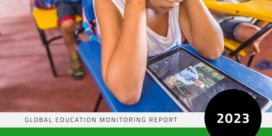Crunch the numbers: Edtech data you can use right now
UNESCO 2023 Global Education Monitoring Report on cyberbullying; NWEA examines reading fluency intervention targeting struggling middle school readers; Schoolero ranks the safest states for students.


